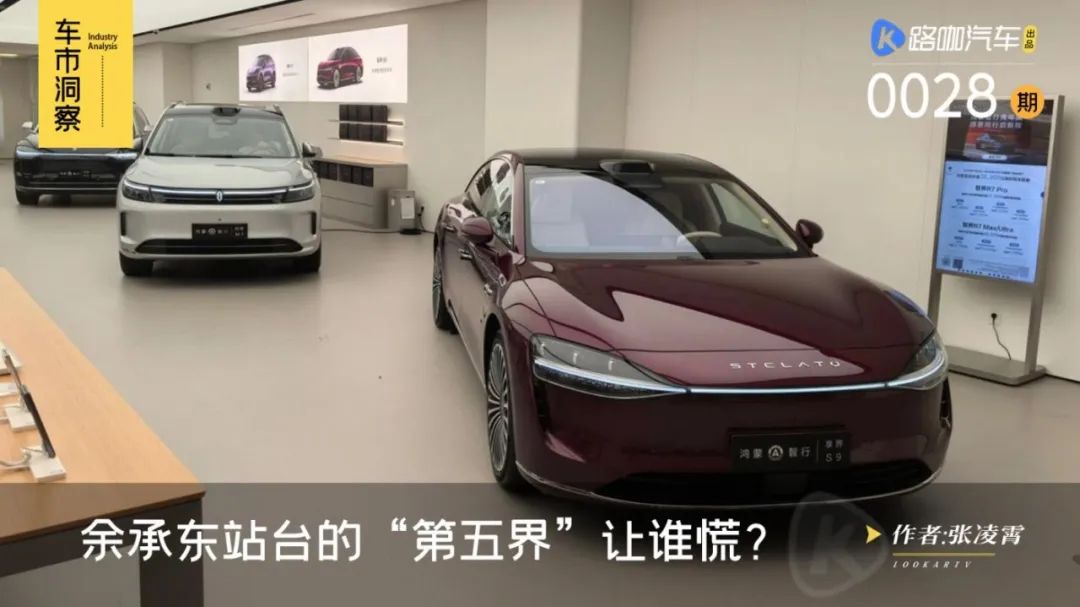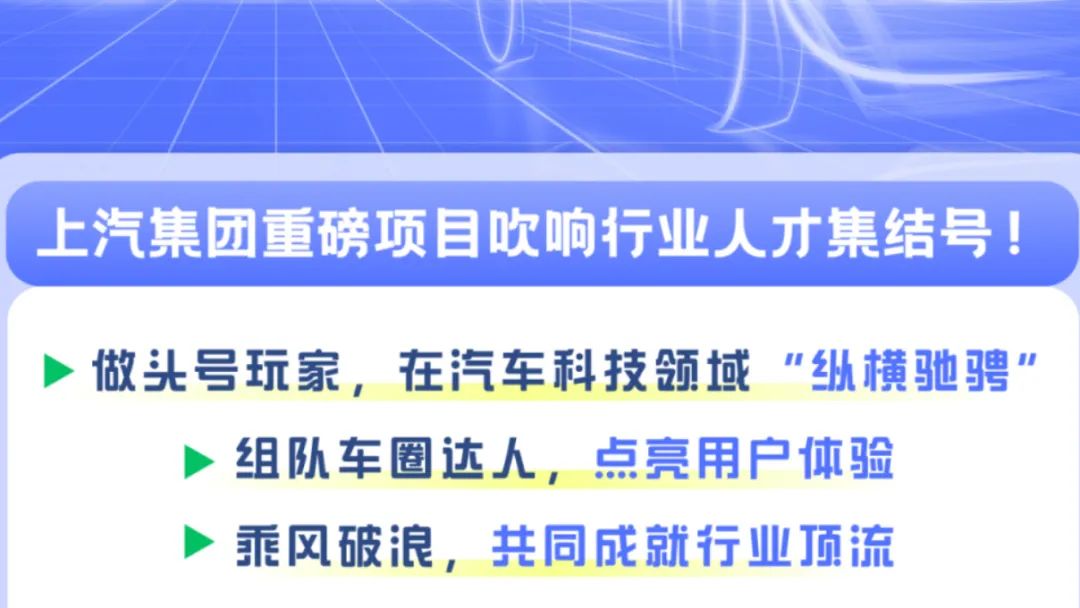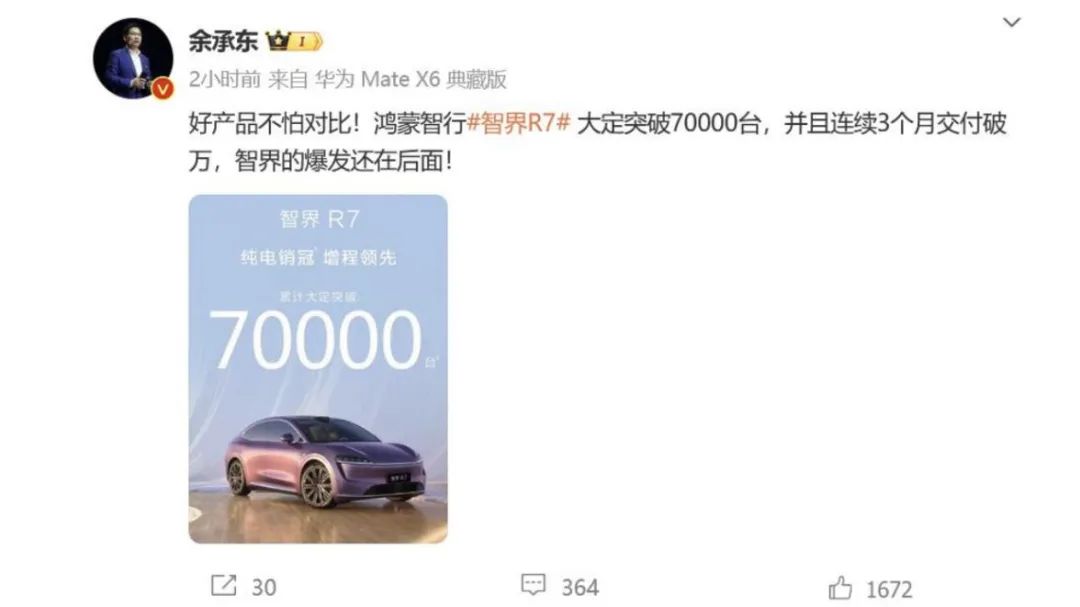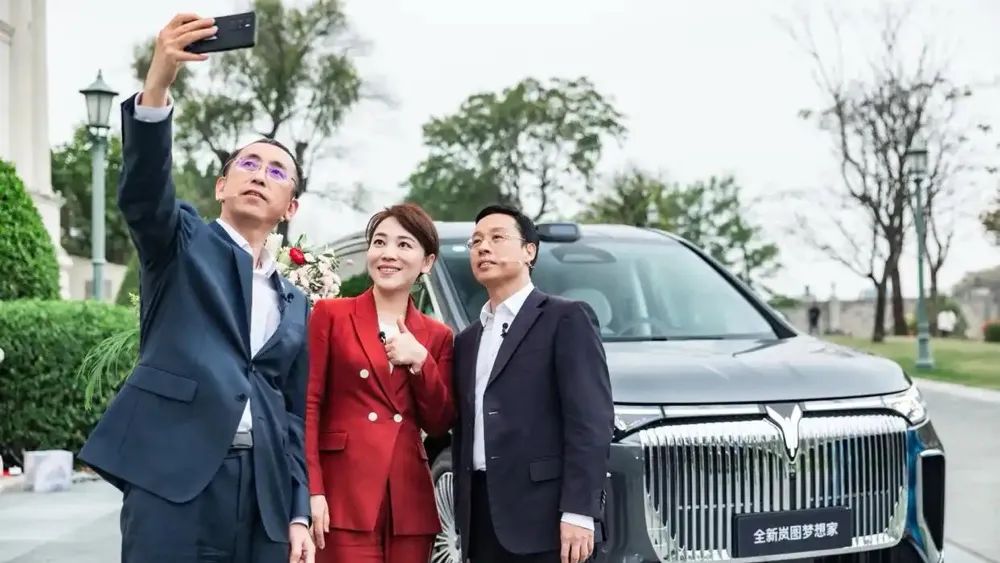Battling for 'Intelligent Driving for All': Will SAIC Craft the 'Most Affordable Huawei Car'?
![]() 02/24 2025
02/24 2025
![]() 522
522

SAIC and Huawei have officially unveiled their deep collaboration, with Yu Chengdong, Chairman of Huawei's Intelligent Automotive Solutions BU, prominently featured in the group photo, silently speaking volumes. The trademark 'Shangjie', applied for by SAIC Group, is poised to become Huawei's fifth 'Jie' brand.
SAIC Group clarified that the partnership will encompass strategic cooperation in product definition, manufacturing, supply chain management, sales, and service. In essence, Huawei will be intricately involved in every phase of the jointly developed models, from inception to market launch.

A source informed LUKA Auto that the first collaborative model could hit the market as early as December this year. With less than a year to go, it's virtually certain that the initial model will be a refreshed version rather than an entirely new development.
On the eve of the Year of the Snake Spring Festival, we exclusively reported that SAIC's mass passenger vehicle segment had initiated a comprehensive competition for all positions. Through organizational restructuring and foundational mechanism rebuilding, SAIC prepared for Huawei's integration. On the night of the collaboration's official announcement, SAIC's mass passenger vehicle segment officially released recruitment information for their 'heavyweight project' with Huawei, targeting key positions such as vehicle product leader, vehicle product manager, and vehicle project leader.
Recently, SAIC's mass passenger vehicle segment made significant progress in its position competition, appointing and dismissing over 60 middle-level cadres simultaneously. A source close to SAIC Group revealed, 'The over 60 cadres who successfully competed for positions are primarily responsible for SAIC's independent segment's original business. The Shangjie project operates independently.'

Preparation is key. In fact, prior to the official announcement of the collaboration, the Shangjie project had already commenced social recruitment. An insider disclosed that social recruitment was primarily targeted at Huawei OD (Outsourcing Develop) positions assigned to SAIC.
Shangjie: The Most Affordable 'Huawei Car'?
In our previous exclusive report, we mentioned that the first model initially confirmed for collaboration between SAIC and Huawei was the medium-sized pure electric SUV with the internal code name 'ES37' from R-Auto. This new model, named Feifan RC7, released its application information in May last year and was originally slated for launch the same year. However, due to the integration of the Roewe and Feifan brands, the ES37 project was shelved.
Post the Spring Festival of the Year of the Snake, rumors circulated that the first Shangjie model would revive the pure electric flagship SUV with the internal code name 'ES39' from SAIC Roewe. However, this information was subsequently denied by insiders from SAIC.
In our previous reports, we speculated on the product positioning of the models resulting from the SAIC-Huawei collaboration. If the starting price of the new models is set below 200,000 yuan, it will circumvent positioning conflicts with other SAIC sub-brand models.

If the starting price dips below 200,000 yuan, Shangjie will become the most affordable Huawei car. The subsequent question is whether Huawei is prepared to offer its comprehensive solution for models priced below 200,000 yuan. Yu Chengdong has publicly stated that maintaining such low costs is unfeasible and that even the AITO Askev, priced above 200,000 yuan, is operating at a loss.
Irrespective of whether Shangjie can accommodate Huawei's comprehensive solution, based on past experience, access to Huawei's channels signifies half the battle won. Moreover, within AITO's product matrix, encompassing AITO Vision, AITO Noble, and AITO Enjoy, there is no model priced below 200,000 yuan. If Shangjie fills this void, it stands a strong chance of success.
'The primary variable here isn't something else but whether SAIC can relinquish its right to speak,' commented an insider close to SAIC Group. Huawei's IPD system is vastly different from the product development processes of traditional automakers. Their collaboration essentially amounts to Huawei teaching automakers how to build cars. This process is bound to encounter contradictions and conflicts. The insider bluntly stated that this is crucial for the success of Shangjie.
Who Will Tremble at the Prospect of the Fifth 'Jie'?
Earlier this year, BYD ignited a wave of 'Intelligent Driving for All' by introducing high-level intelligent driving to lower-priced models. It's reported that shortly after BYD announced 'Intelligent Driving for All', order volumes surged significantly in various regions. Since BYD's announcement in February, many mainstream automakers have been eager to act. Chery and Geely announced the launch of new intelligent strategies in March.
It's foreseeable that once high-level intelligent driving becomes a standard feature, it will cease to be a selling point for mid-to-high-end models. Amidst the wave of equal rights in intelligent driving, even Huawei cannot remain indifferent. Especially in the mental battle for high-level intelligent driving, seizing the initiative will directly determine success or failure.

Jin Yuzhi, CEO of Huawei's Intelligent Automotive Solutions BU, recently stated publicly that Huawei was the first to propose high-level intelligent driving and introduced the concept of 'Intelligent Driving for All' in August 2024. Subsequently, the all-new Lantu Dreamer introduced the four-wheel-drive Qiankun version, bringing the high-end MPV equipped with Huawei's comprehensive Qiankun Intelligent Driving ADS 3.0 to the 350,000 yuan price range for the first time.
In essence, equal rights equate to a price decline. Whether the price can be brought below 200,000 yuan is also tied to whether Huawei can truly realize 'Intelligent Driving for All'. This poses a challenge for Huawei and an opportunity that SAIC can seize.
There are no unsellable cars, only unsellable prices. In the era of electric vehicles, the core technologies of OEM engines and transmissions have been circumvented. A car's sales success is no longer directly tied to a company's technological prowess. The failure of the once independent sub-brand Feifan indirectly corroborates this point. An insider from SAIC commented that SAIC doesn't lack technological reserves but is weak in product definition. Once the market positioning is nailed down, the 150,000 yuan Shangjie is destined to become a game-changer in the new energy vehicle market.
Yu Chengdong once stated that sales of models priced above 300,000 yuan with HarmonyOS Intelligent Driving significantly outpace those priced below 300,000 yuan, as consumers are willing to pay more. This underscores consumers' recognition and willingness to pay for Huawei's intelligent driving. Data also supports this notion. According to statistics from a research institution, the optional rate for the intelligent driving package supporting urban NOA on AITO Vision R7 exceeds 90%.
If we follow this logic and trend, once the price of Huawei's intelligent driving declines, it will emerge as a potent tool for capturing the market. By then, Huawei and BYD will square off in the battle for 'Intelligent Driving for All'.
Automakers that felt the chill from BYD's 'Intelligent Driving for All' will once again shiver at the prospect of Huawei. Media reports claimed that after BYD announced 'Intelligent Driving for All', Li Auto's new intelligent driving platform is considering adding the urban NOA feature to distinguish itself from BYD.
BYD's advantage lies in its substantial sales scale and abundant funds: it's bringing 200 billion yuan to the table to fight for equal rights in intelligent driving. This puts pressure on other automakers. As Huawei and BYD compete for the top spot in intelligent driving, how will other automakers respond? There are basically two avenues: one is to 'follow in BYD's footsteps', efficiently replicating successful products and logic; the other is to actively 'invest in Huawei' and relinquish control. In this business landscape, no new entrant dares to claim that it has truly survived the life-and-death struggle. SAIC + Huawei will undeniably usher in a harsh winter for new forces.







